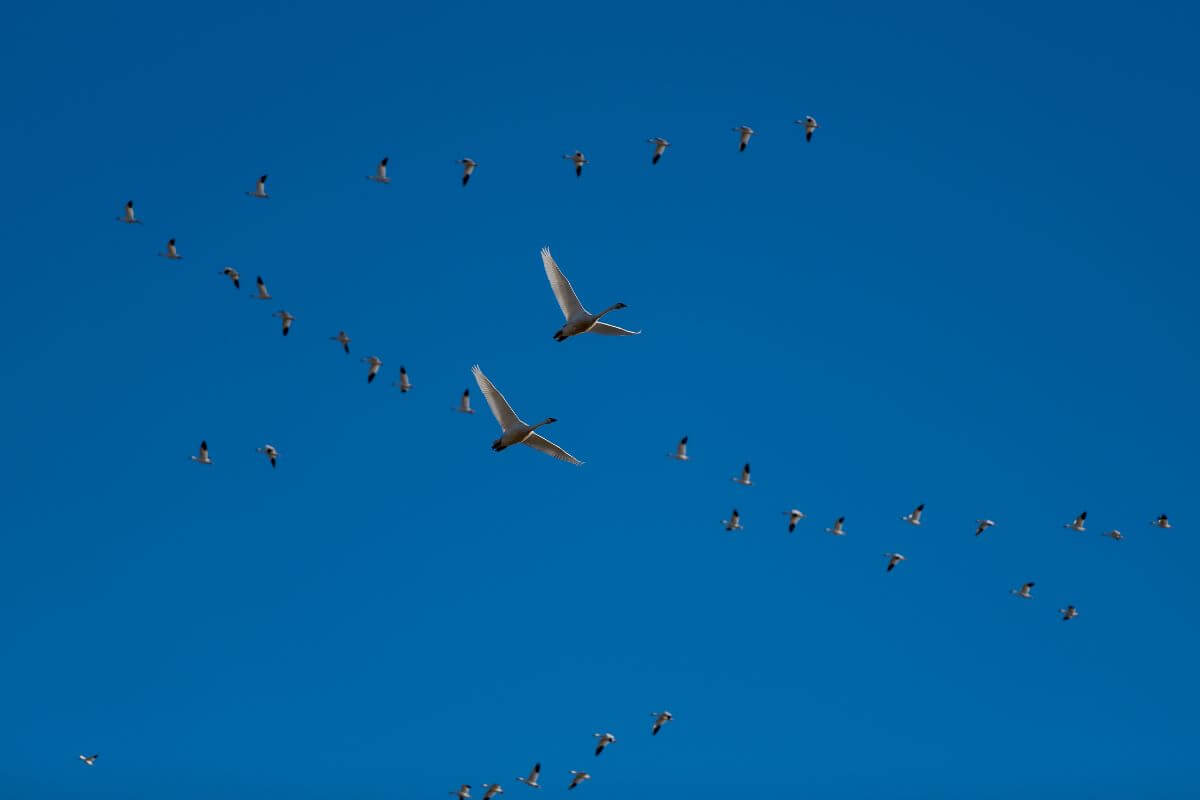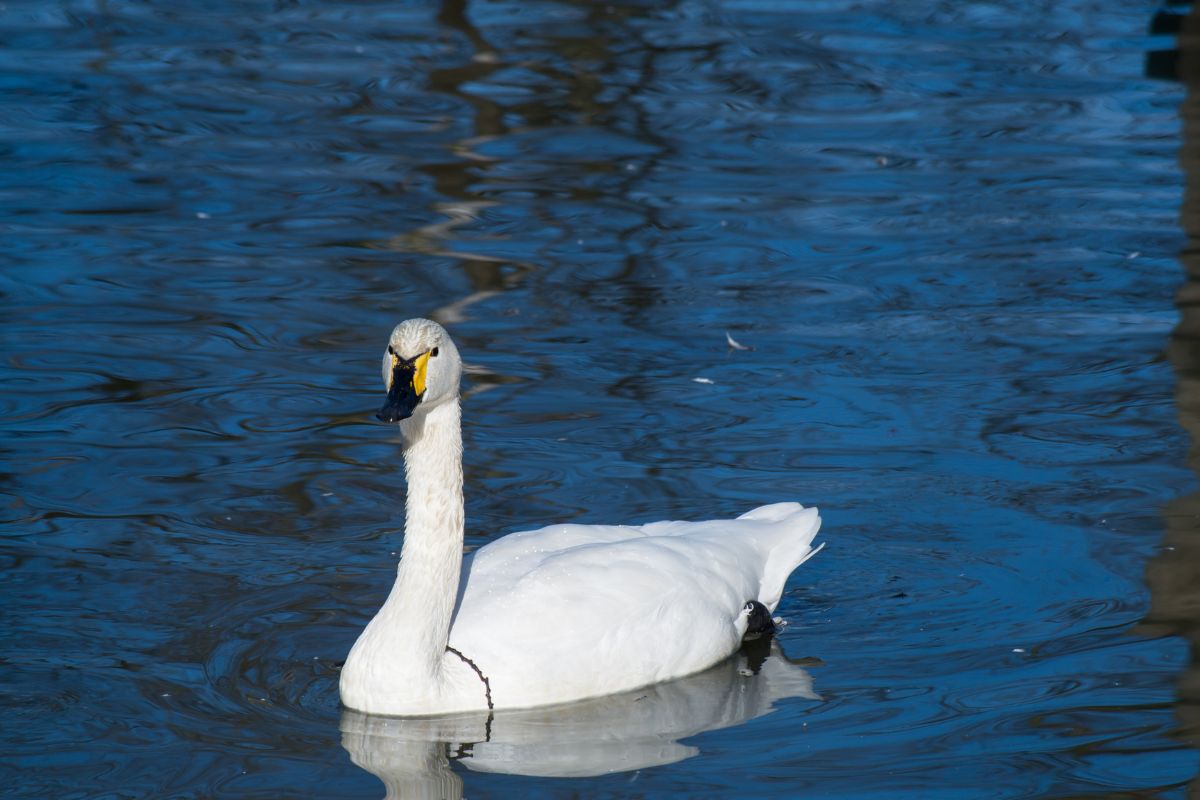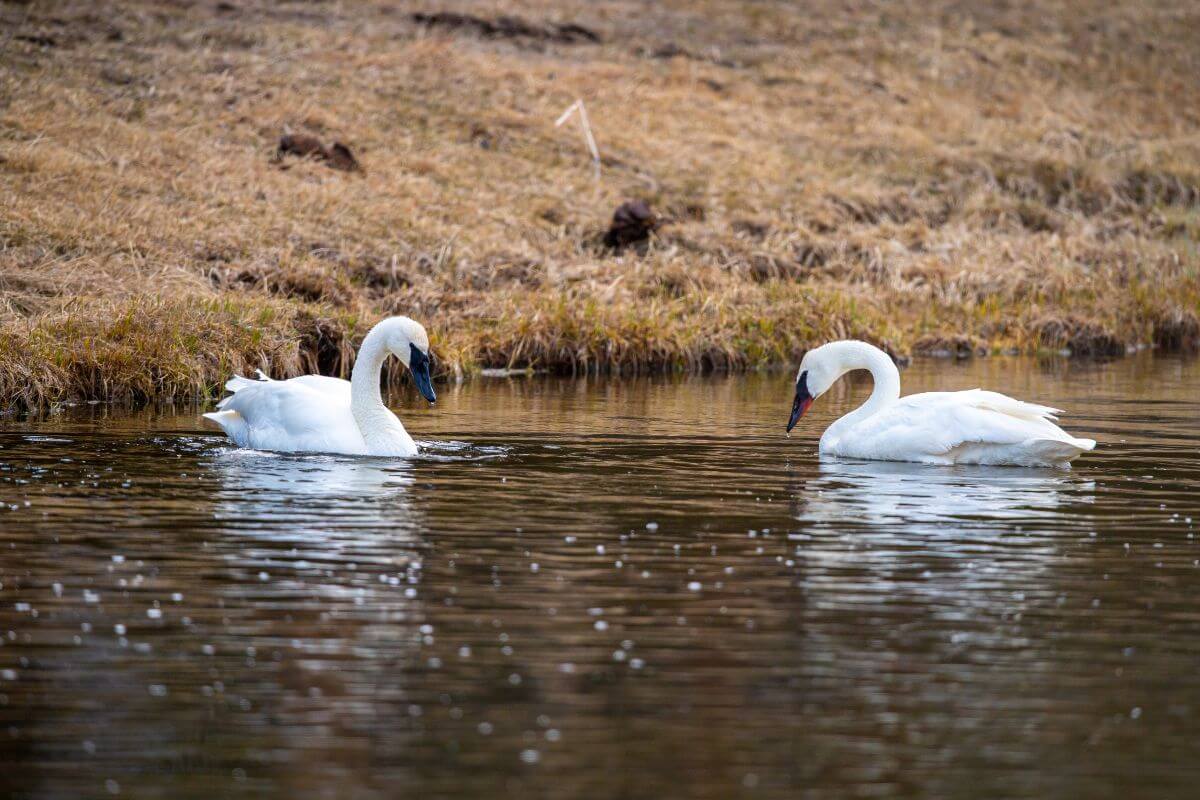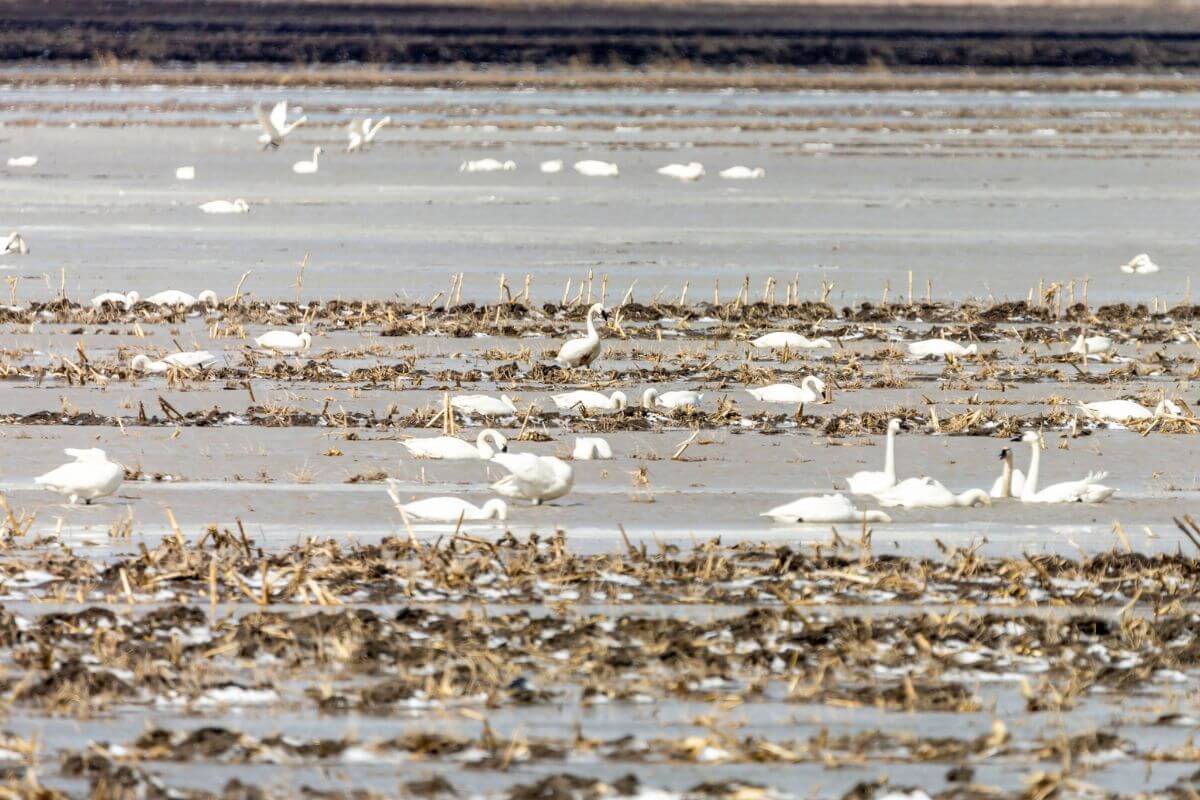In the wild beauty of Montana, with its huge mountains and clear rivers stretching through wide valleys, there’s a special and exciting activity that nature lovers enjoy: swan hunting.
In this article, we’ll be diving into the world of Montana swan hunting, a unique and challenging pursuit that’s become increasingly popular. If you’re a wildlife admirer who’s always on the hunt for new adventures or a seasoned hunter seeking a new challenge, this article is tailor-made for you.
You can expect to learn about the different swan species found in Montana, the necessary hunting licenses and fees, the rigorous hunt seasons, important hunting regulations, and top techniques for successful swan hunting.
- Related article: Montana Hunting Strategies
Each section is filled with firsthand experiences and insights to prepare you for your next hunting trip. So, stay with us as we delve into the essentials of Montana swan hunting — you’re about to embark on a journey that will both challenge and reward you in nature’s splendid canvas.
7 Key Takeaways on Montana Swan Hunting
- Montana is home to two kinds of swans – the Trumpeter Swans and the Tundra Swans.
- Both types of swans are allowed to be hunted in all parts of the state, but it is recommended that hunters prioritize the hunting of Tundra Swans to promote the growth of Trumpeter Swans.
- Some of the prerequisites for the Montana swan hunting licenses include Federal Migratory Bird and MT Migratory License.
- In Montana, the swan hunting season is categorized into two divisions known as the Central and Pacific flyways.
- Everyone who hunts migratory birds in Montana, as well as in other states, must participate in a program called the Migratory Bird Harvest Information Program (HIP).
- Youth aged between 10 and 15 have the opportunity to take part in a unique two-day hunting session for waterfowl.
- To increase the successful guarantees in hunting swans in Montana, one may use decoys and calls as effective hunting techniques.
About Montana Swan Hunting

Swan hunting in Montana is a unique and thrilling experience that allows hunters to witness the beauty of these magnificent birds up close. To make the most of this adventure, there are several key things that hunters should know.
From understanding the regulations and permits required to identifying the different species of swans, proper preparation is essential. By keeping these key factors in mind, hunters can embark on a memorable and responsible swan hunting in the splendid state of Montana.
1. Montana Swan Species

Montana is home to two species of swans — the Trumpeter Swans and the Tundra Swans. The Trumpeter Swans are the largest waterfowl in North America, while the Tundra Swans are also known as the whistling swans due to the sound of their wingbeats.
Identifying swans can be challenging, but understanding their different characteristics can greatly help. Here are the key characteristics of each swan species in Montana:
| Swan Species | Size | Sound | Color | Habitat | Food Habits |
|---|---|---|---|---|---|
| Trumpeter Swan | Larger | Loud, trumpet-like call | Solid black bills | Riverine wetlands, lakes, ponds, marshes, open wooded regions, and prairies | Vegetarian with the occasional fish |
| Tundra Swan | Smaller | High-pitched “oo-OO-oo” call | Yellow markings below the eyes | Extensive wetlands and lakes with long shorelines | Roots, stems, and leaves of aquatic vegetation |
Differentiating between Trumpeter Swans and Tundra Swans can be done by closely paying attention to their calls. However, bill characteristics and other features may also be helpful in close-range observations.
Although both swan species are legal to hunt in Montana, hunters are encouraged to focus their harvest on Tundra Swans. This emphasis on Tundra Swans helps maintain the population growth of Trumpeter Swans.
By prioritizing the conservation of Trumpeter Swans, the hunting territory in Montana can continue to support a diverse and thriving swan population.
2. Montana Swan Hunting Licenses and Fees
In Montana, individuals interested in swan hunting are required to obtain a valid hunting license before their hunting expedition. The Montana Swan Hunting Licenses are available for both resident and non-resident hunters and come with different fees.
Here’s a breakdown of the fee and availability of Montana Swan Hunting Licenses:
| Swan License | Resident Fee | Nonresident Fee | Availability |
| Swan | $5 | $5 | Special Drawing |
| Swan — Central Flyway Only | $0 | $0 | Special Drawing |
The hunt cost for swans in Montana is dependent on the type of license acquired and the residency. For resident hunters, the resident swan hunting permits can be obtained at a lower rate compared to non-resident hunters.
The prerequisites for swan licenses in Montana are as follows:
| Prerequisite | Resident 12-15 | Resident 16-17 | Resident 18-61 | Resident 62+ | Nonresident 12-15 | Nonresident 16-17 | Nonresident 18+ |
| Federal Migratory Bird Stamp | N/A | $25.00 | $25.00 | $25.00 | N/A | $25.00 | $25.00 |
| MT Migratory License | $3.25 | $3.25 | $6.50 | $6.50 | $25.00 | $25.00 | $50.00 |
| Conservation License | $4.00 | $4.00 | $8.00 | $4.00 | $10.00 | $10.00 | $10.00 |
| Base Hunting License | $10.00 | $10.00 | $10.00 | $10.00 | $15.00 | $15.00 | $15.00 |
These fees are subject to change and hunters need to stay updated with the latest information regarding license rates and fees. By obtaining the necessary swan hunting license in Montana, both resident and non-resident hunters can enjoy the thrill of swan hunting while adhering to state regulations.
3. Montana Swan Hunting Season Dates
The Montana Swan hunting season offers different sets of dates in two primary flyways: Central and Pacific. Here’s a general idea of when you can begin searching for these majestic fowls:
| Swan Special License | Season Dates |
|---|---|
| Central Flyway | September 30 – January 4 |
| Pacific Flyway | October 7 – December 1 |
Treat these dates as a starting point only. Always verify the most current regulations through official channels, such as Montana Fish, Wildlife & Parks (Montana FWP), or utilize FWP’s online Hunt Planner for detailed, area-specific information.
Now, if you’re curious about how the flyways are divided:
- The Pacific Flyway includes Hill, Chouteau, Cascade, Meagher, and Park counties and all counties lying west of these.
- The Central Flyway includes Blaine, Fergus, Judith Basin, Wheatland, Sweet Grass, Stillwater, and Carbon counties, and all counties lying east of these.
The Central Flyway is divided into two zones, as a conservation measure to support a more rigorous hunt:
- Zone 1 – All other counties in the Central Flyway.
- Zone 2 – Big Horn, Carbon, Custer, Prairie, Rosebud, Treasure, and Yellowstone counties.
Being aware of these flyway divisions and differing season dates can enrich your hunting experience, allowing you to not only comprehend your legal framework but also effectively target your hunting efforts.
4. Montana Swan Hunting Regulations

Montana is a migratory bird haven, and if you plan to hunt swans, here’s the drill:
- Migratory Bird Harvest Information Program (HIP) – First things first – sign up for the Migratory Bird Harvest Information Program (HIP). It’s like the census for bird hunters, mandatory in Montana and all across the U.S.
- Special Youth Waterfowl Hunt – Got a budding hunter in the family? Kids between 10 to 15 have a special 2-day window in September called the Special Youth Waterfowl Hunt. But remember, they’ll need a non-hunting adult with them at all times.
- Baiting – Hands off the bait! It’s a no-go to use any kind of bait to attract swans, or any migratory game bird, for that matter. The regulatory details are clear – no baiting allowed, folks.
- Method of Taking – Choose your weapon wisely – long, recurve, or compound bows, shotguns (but not larger than 10 gauge and they can only hold 3 shells), or falconry are your go-to methods.
- Nontoxic Shot – Say goodbye to lead shots when hunting swans. You’ll need to use approved non-toxic shots; it’s state law.
- Possession Limit – Regarding possession limits, there are regulations on the number of birds that can be possessed at any time and in any form, including fresh, stored, salted, smoked, dried, canned, or preserved. Word to the wise: the bag limit is strictly one swan.
- Selling/Possession of Migratory Game Birds – Feathers of migratory waterfowl can be possessed, purchased, sold, bartered, or transported for making fishing flies and similar commercial uses, except for millinery or ornamental purposes.
These regulations might sound like the fine print of your hunting trips, but abiding by them ensures that Montana’s beautiful birdlife is sustained for your enjoyment and the generations to come.
5. Montana Swan Hunting Tips

When it comes to Montana swan hunting, a mix of skill and strategy is your ticket to success. Here are some proven tips and techniques to help you bag your prized bird:
- Pass-Shooting – The majority of swan hunters in the West prefer pass-shooting. It involves intercepting pressured swans rather than trying to lure them. On big bodies of water, this method is often more effective.
- Decoys – You can start with as little as 4 swan decoys, but more decoys can make your spread more inviting to passing birds. Opt for decoys with removed heads instead of erect heads for better results.
- White Garbage Bags – Inflated white garbage bags, when properly anchored, can be surprisingly effective as a budget-friendly alternative for swan decoys.
- Scouting – Scouting is critical. By locating their roost, feed, and flight path, you can set up your decoy spread more strategically.
- Calling – Swans are responsive to calls. A good swan call or proficient mouth-calling can significantly increase your success rate.
- Shot – Aiming for the head is your best bet, considering swans’ size and speed. Use ammunition you’re comfortable with, and remember that swans often fly faster than they seem.
These tips, along with a keen eye and a patient hand, should help you on your way to a successful swan-hunting expedition in Montana.
Montana Swan Hunting Final Thoughts

Navigating Montana’s sprawling hooved territories and hiking through its lofty landscapes, honed by Mother Nature herself, definitely require much more than a hunting permit – they demand respect for the environment and a deep-seated passion for discovery.
Delving into the nuances of swan hunting, whether it’s identifying species, comprehending hunting dates, or mastering the art of ethical hunting, can be an enriching journey in its own right. It’s a chance to connect with nature and contribute to our avian ecosystem.
So, whether you’re a seasoned Montana hunter or a novice eager to stretch your wings, the tips and guidelines provided here will not just aid you in your swan-hunting adventure, but also ensure your imprint is as eco-friendly as it is thrilling.
Montana’s enchanting settings offer an unrivaled stage for both exploration and respect, and it’s your turn to step up and make your days count in this mesmerizing paradise. Just remember, the real joy of Montana swan hunting lies not just in a successful catch, but in the mindful journey itself.
Montana Swan Hunting FAQs
1. Can You Hunt Trumpeter Swans in Montana?
Trumpeter swans are legal to hunt in Montana but hunters are encouraged to focus on tundra swans so that trumpeter swan populations may continue to increase.
2. Where Can I See Swans in Montana?
Swans can often be spotted in Montana at locations such as Freezeout Lake Wildlife Management Area, Red Rock Lakes National Wildlife Refuge, and Ninepipe National Wildlife Refuge. These areas provide excellent opportunities to observe the majestic swans in their natural habitats.
3. What Birds Can I Shoot in Montana?
In Montana, hunters can pursue a variety of game birds, including but not limited to pheasants, grouse, partridges, ducks, and geese.
However, specific regulations, seasons, and bag limits are set by the Montana Fish, Wildlife & Parks, and hunters must be familiar with and adhere to these guidelines for responsible and legal hunting.
4. Can You Hunt in Montana in Waterfowl Production Areas?
In Montana, Waterfowl Production Areas (WPAs) managed by the U.S. Fish and Wildlife Service are generally open to waterfowl hunting, offering hunting opportunities for geese and duck.
5. Does Montana Have Swans?
Montana is home to both residents and migratory swans. Trumpeter swans, with their distinctive trumpeting calls, can be found in various wetland areas across the state, particularly during their migration periods.
Feed your curiosity and check out our latest must-read articles about Montana:
- Montana OTC Bighorn Sheep Hunting Guide
- Montana Squirrel Hunting Guide
- Upland Bird Hunting in Montana
- Wolf Hunting in Montana
- https://fwp.mt.gov/hunt/regulations/swan
- https://www.fws.gov/species/trumpeter-swan-cygnus-buccinator
- https://www.fws.gov/species/tundra-swan-cygnus-columbianus
- https://www.fws.gov/story/2024-02/bird-month-tundra-swan
- https://fieldguide.mt.gov/speciesDetail.aspx?elcode=ABNJB02030
- https://fwp.mt.gov/binaries/content/assets/fwp/hunt/regulations/2023/2023-mig-bird–webless-final-for-web.pdf

